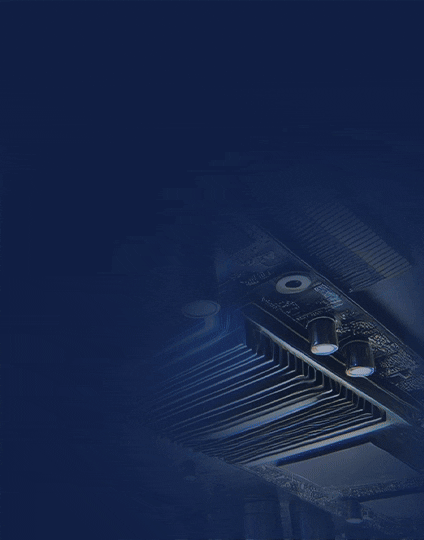FPGA Insights has engaged in an exclusive interview with Mohammad-Reza Feyzi, FPGA design Engineer at University of Tabriz

Q1) Can you provide an overview of your experience with FPGA design projects mentioning a few that you’ve worked on, starting with a brief introduction?
FPGAs are hardware components that can be programmed and are used to create digital circuits. I am able to impart broad information, talk about programming languages like Verilog and VHDL, and help with the design and implementation of digital systems using FPGAs. I have also worked in other areas of the telecommunications system, including beamforming, OFDM, and others.
Q2) Can you explain the benefits of using FPGAs over other types of processors?
Of course! Compared to other processor types like ASICs (application-specific integrated circuits) and general-purpose CPUs (central processing units), Field-Programmable Gate Arrays (FPGAs) provide a number of advantages. The following are some major advantages of FPGA use:
1. Flexibility and Programmability:
Configurability: FPGAs can be reprogrammed after manufacturing, allowing for flexibility in adapting to changing requirements or debugging issues without the need for hardware changes.
Customization: Users can implement custom hardware accelerators or specialized processing units tailored to specific applications.
2. Performances:
FPGAs can provide high performance for specific tasks compared to general-purpose processors. Customized hardware implementations can achieve better efficiency for certain algorithms and computations.
3. Low Power Consumption:
FPGAs can be power-efficient for specific workloads since designers have control over the hardware architecture. This allows for optimization of power consumption based on the application’s requirements.
4. Real-Time Processing:
FPGAs are well-suited for real-time applications due to their ability to process data in parallel. This is crucial for applications like control systems, communication protocols, and image processing that demand rapid response times.
5. Prototyping and Rapid Development:
FPGAs are commonly used in the prototyping phase of hardware development. They provide a quick and flexible platform for testing and iterating designs before committing to the more costly and time-consuming process of ASIC fabrication.
6. Cost-Effective for Low to Medium Volumes:
For low to medium production volumes, FPGAs can be a cost-effective solution compared to the high upfront costs associated with ASIC development.
It’s important to note that the choice between FPGA and other processors depends on the specific requirements of the application. General-purpose processors may be more suitable for tasks with high instruction-level parallelism and sequential processing, while FPGAs shine in applications with parallelizable tasks and the need for customization and real-time processing.
Q3) What are the most significant trends observed in the FPGA industry over the past year? How will these trends shape the industry’s future?
As of my last knowledge update in January 2022, I don’t have specific information about the FPGA industry’s trends over the past year. However, I can highlight some general trends that were shaping the FPGA industry leading up to that point, and these trends may continue to influence the industry in the future:
1. Heterogeneous Computing:
FPGAs are increasingly being used in conjunction with other processing units, such as CPUs and GPUs, to create heterogeneous computing platforms. This trend allows for better optimization of workloads by leveraging the strengths of different processing architectures.
2. High-Level Synthesis (HLS):
The adoption of HLS tools has been growing. These tools enable designers to describe hardware functionality using higher-level programming languages like C, C++, or OpenCL, making FPGA development more accessible to software engineers and potentially speeding up the design process.
3. Edge Computing and IoT:
FPGAs are finding increased applications in edge computing and Internet of Things (IoT) devices. Their ability to perform real-time processing with low power consumption makes them suitable for applications at the edge of the network.
4. AI Acceleration:
FPGAs are being utilized for accelerating artificial intelligence (AI) workloads, particularly in applications like machine learning inference. Customizable hardware architectures can be tailored to the specific requirements of neural network models.
5. 5G Infrastructure:
The deployment of 5G networks has driven the demand for FPGAs in telecommunications infrastructure. FPGAs are used in base stations and network equipment for tasks like signal processing and protocol handling.
6. Security and Encryption:
Security continues to be a significant concern, and FPGAs are being employed to implement cryptographic algorithms and secure communication protocols. This is especially crucial in applications dealing with sensitive data.
7. Automotive Applications:
FPGAs are finding increased use in the automotive industry for applications like advanced driver-assistance systems (ADAS) and in-vehicle infotainment systems. Their flexibility allows for adapting to evolving standards and requirements.
These trends reflect the growing diversity of applications and the need for specialized, high-performance hardware solutions. The FPGA industry is likely to continue evolving in response to advancements in technology, the increasing demand for customization, and the ongoing integration of FPGAs into various computing environments. For the most up-to-date information, it’s recommended to check industry reports, news, and resources specific to the FPGA market.
Q4) How do you see FPGA development evolving to meet the demands of modern applications and complex workloads?
1. Abstraction and High-Level Synthesis (HLS):
The trend towards higher levels of abstraction, such as HLS, is likely to continue. This allows developers to describe hardware functionality using familiar programming languages, making FPGA development more accessible to a broader range of engineers, including those with software backgrounds.
2. AI and Machine Learning Acceleration:
FPGAs are likely to play an increasingly important role in accelerating AI and machine learning workloads. Customizable hardware architectures can be tailored to the specific requirements of neural network models, providing efficient and high-performance solutions.
3. Edge Computing and IoT:
Given the rise of edge computing and IoT, FPGAs will likely see increased use in applications requiring real-time processing at the edge of the network. Their ability to balance performance and power efficiency makes them well-suited for deployment in resource-constrained environments.
4. Security Enhancements:
With a growing emphasis on cybersecurity, FPGA development is likely to include enhanced features for implementing and accelerating cryptographic algorithms. FPGAs can be leveraged to improve the security of data processing and communication in various applications.
5. Parallel Processing and Data Movement:
As applications demand higher performance, FPGAs will continue to excel in parallel processing and managing data movement efficiently. Customizable hardware designs can be optimized for specific data processing patterns, contributing to improved overall system performance.
6. Energy Efficiency:
As energy efficiency becomes a crucial consideration, FPGA development may focus on optimizing power consumption. This could involve the incorporation of power-aware design techniques and features that enable FPGAs to operate more efficiently in low-power environments.
Overall, FPGA development will likely continue to evolve in response to the evolving landscape of computing demands. This evolution will involve a combination of hardware innovations, improved development tools, and a deeper integration with emerging technologies. The adaptability and programmability of FPGAs position them as valuable components in the toolkit for addressing the challenges posed by modern applications and complex workloads.
Q5) Key drivers behind the increasing adoption of FPGAs in various applications and industries?
The increasing adoption of FPGAs in various applications and industries can be attributed to several key drivers:
1. Customization and Flexibility:
FPGAs offer a high level of customization, allowing designers to implement application-specific functionality in hardware. This flexibility is particularly valuable in industries with diverse and specialized requirements.
2. Performance Acceleration:
FPGAs can provide significant performance improvements for specific tasks compared to general-purpose processors. In applications such as signal processing, image/video processing, and cryptography, the parallel processing capabilities of FPGAs contribute to accelerated performance.
3. Parallel Processing and High Throughput:
FPGAs excel at parallel processing, making them well-suited for applications that require high-throughput and low-latency data processing. This is particularly beneficial in industries such as telecommunications, finance, and scientific computing.
4. Real-Time Processing:
The ability of FPGAs to perform real-time processing is crucial in applications where low latency and immediate response times are essential. Industries like automotive (for advanced driver-assistance systems) and industrial automation benefit from this capability.
5. Adoption in AI and Machine Learning:
FPGAs are increasingly being used to accelerate artificial intelligence (AI) and machine learning (ML) workloads. Their configurability allows for the efficient implementation of custom hardware architectures optimized for specific neural network models.
6. Edge Computing and IoT:
FPGAs are well-suited for edge computing and Internet of Things (IoT) devices. Their ability to process data at the edge, combined with low power consumption, makes them attractive for applications where on-device processing is essential.
7. Security Applications:
FPGAs are employed in applications requiring robust security measures. Their reprogram ability allows for the implementation of cryptographic algorithms, secure communication protocols, and other security features in industries such as finance, healthcare, and military.
8. Cloud Computing Integration:
Cloud service providers are incorporating FPGAs into their data centers, offering customers the ability to accelerate specific workloads. This trend supports the demand for customizable and efficient hardware resources in cloud computing environments.
The combination of customization, performance acceleration, and adaptability to specific industry needs positions FPGAs as versatile solutions for a wide range of applications, driving their increasing adoption across various industries.
Q6) Sectors that stand to benefit the most from FPGA integration, and why?
Several sectors stand to benefit significantly from the integration of FPGAs (Field-Programmable Gate Arrays) due to their versatility, customization capabilities, and high-performance features. Here are six sectors that can particularly benefit:
1. Telecommunications:
Why: FPGAs are widely used in telecommunications for tasks such as baseband processing, signal modulation/demodulation, and protocol handling. The real-time processing capabilities and ability to adapt to evolving standards make FPGAs crucial in the development of communication infrastructure, especially in the context of 5G networks.
2. Aerospace and Defense:
Why: The aerospace and defense industries benefit from FPGAs due to their reliability, high-performance computing capabilities, and the ability to implement secure communication protocols. FPGAs are used in radar systems, avionics, secure communication systems, and other mission-critical applications where customization and real-time processing are essential.
3. Medical Imaging and Healthcare:
Why: FPGAs play a key role in medical imaging applications such as MRI (Magnetic Resonance Imaging), CT (Computed Tomography), and ultrasound. Their parallel processing capabilities enable real-time image processing, and their configurability allows for rapid adaptation to evolving imaging algorithms. In healthcare, FPGAs are also used in genetic sequencing and diagnostic equipment.
4. Automotive:
Why: FPGAs find applications in the automotive industry for advanced driver-assistance systems (ADAS), in-vehicle infotainment, and engine control units. The ability to process sensor data in real-time, customize hardware for specific vehicle models, and adapt to changing safety standards makes FPGAs valuable in the rapidly evolving automotive landscape.
5. Financial Services:
Why: In the financial sector, FPGAs are used for accelerating complex computational tasks such as risk analysis, algorithmic trading, and encryption. The parallel processing capabilities of FPGAs contribute to faster data processing, enabling financial institutions to make quick and informed decisions in a highly competitive environment.
6. Data Centers and Cloud Computing:
Why: Cloud service providers integrate FPGAs into their data centers to accelerate specific workloads, such as data analytics, machine learning, and video transcoding. FPGAs provide a customizable hardware platform that can be reconfigured based on the changing computational demands of different applications, offering performance advantages over traditional CPUs and GPUs.
These sectors benefit from FPGAs due to their ability to provide customized, high-performance solutions that meet the specific requirements of each industry. The adaptability and programmability of FPGAs make them valuable in scenarios where off-the-shelf solutions may not be optimal, and where real-time processing, customization, and energy efficiency are crucial considerations.
Q7) The role of FPGAs in accelerating AI applications and advancements expected in the near future?
FPGAs (Field-Programmable Gate Arrays) play a crucial role in accelerating AI (Artificial Intelligence) applications, especially in the realm of machine learning. Here’s an overview of their role and expected advancements in the near future:
Role of FPGAs in AI Acceleration:
1. Custom Hardware Acceleration:
FPGAs allow the implementation of custom hardware accelerators for specific AI workloads. This is particularly beneficial for tasks like neural network inference, where customized hardware can significantly improve performance.
2. Parallel Processing:
FPGAs excel at parallel processing, a key requirement for many AI algorithms. Neural networks, in particular, involve matrix multiplications and convolutions that can be parallelized efficiently on FPGAs.
3. Flexibility for Model Changes:
The configurability of FPGAs allows for flexibility in adapting to changes in AI models. As machine learning models evolve, FPGAs can be reprogrammed to accommodate new architectures and algorithms without requiring changes to the underlying hardware.
4. Low-Latency Inference:
FPGAs are capable of providing low-latency inference, making them suitable for applications that require real-time processing. This is crucial in scenarios like edge computing, where immediate decision-making is essential.
5. Energy Efficiency:
FPGAs can be more energy-efficient than traditional CPUs and GPUs for certain AI workloads. By tailoring the hardware to the specific requirements of a model, FPGAs can achieve high performance while minimizing power consumption.
6. Heterogeneous Computing:
FPGAs are often integrated with other processing units, creating heterogeneous computing platforms. This integration allows for a balanced approach, leveraging the strengths of different architectures to optimize overall system performance.
Advancements Expected in the Near Future:
1. Improved Tooling and Abstraction:
The development of high-level synthesis (HLS) tools and improved abstraction layers is expected to continue. These advancements make FPGA programming more accessible to a broader audience, including software developers who may not have extensive hardware design experience.
2. Standardization of AI Interfaces:
Efforts to standardize interfaces for deploying AI models on FPGAs are likely to progress. This standardization would simplify the deployment process and make it easier for developers to use FPGAs as accelerators for AI workloads.
3. Increased Integration with AI Frameworks:
FPGAs are expected to integrate more seamlessly with popular AI frameworks and libraries. This integration would facilitate the deployment of AI models on FPGAs and enhance the overall development experience.
4. Optimized Architectures for AI:
FPGA vendors and developers are likely to design architectures specifically optimized for common AI tasks. This could involve the development of pre-built FPGA blocks tailored for neural network operations, further streamlining the acceleration of AI workloads.
5. Wider Adoption in Edge Devices:
As edge computing continues to grow, FPGAs are expected to be more widely adopted in edge devices for on-device AI processing. This trend aligns with the need for low-latency and privacy-preserving AI applications at the edge of the network.
6. Research in AI Hardware Acceleration:
Ongoing research in the field of AI hardware acceleration is likely to lead to innovative approaches for using FPGAs. This may include advancements in algorithms specifically designed for FPGA architectures and improvements in the overall efficiency of AI computations.
In summary, FPGAs are poised to play an increasingly significant role in accelerating AI applications. Continued advancements in tooling, standardization, and optimized architectures are expected to make FPGAs more accessible and efficient for a broader range of AI developers and applications in the near future.
Q8) Ensuring the security and integrity of FPGA designs, especially in sensitive applications like finance and defense?
Ensuring the security and integrity of FPGA (Field-Programmable Gate Array) designs is crucial, especially in sensitive applications like finance and defense, where the protection of data and prevention of unauthorized access are paramount. Here are key considerations and best practices:
1. Secure Design Practices:
Implement secure coding practices during the development of FPGA designs. Follow industry-standard guidelines for hardware description languages (HDL) such as VHDL or Verilog to minimize vulnerabilities and potential security flaws.
2. Secure Configuration Management:
Establish secure configuration management practices to control access to the FPGA design files and configurations. Use version control systems with access controls to track changes and manage the design lifecycle securely.
3. Cryptographic Protections:
Employ cryptographic protections to secure sensitive information within the FPGA. This can include encrypting bit streams and configuration files to prevent unauthorized access and tampering.
4. Device Authentication and Authorization:
Implement robust authentication and authorization mechanisms to control access to the FPGA device. Use secure methods for device authentication, ensuring that only authorized users or systems can configure or interact with the FPGA.
5. Secure Boot and Configuration:
Implement secure boot mechanisms to ensure that the FPGA loads only trusted and authenticated configurations. Protect the configuration process from tampering or loading malicious designs. This is especially important in applications where the FPGA operates in a critical security role.
6. Physical Security Measures:
Implement physical security measures to protect the physical access to the FPGA device. This may include secure storage, tamper-evident packaging, and physical locks to prevent unauthorized physical access.
7. Secure Communication Interfaces:
If the FPGA communicates with external systems or networks, ensure that the communication interfaces are secured. Implement secure protocols, encrypt communication channels, and follow best practices for network security.
8. Regular Security Audits and Reviews:
Conduct regular security audits and reviews of FPGA designs. Engage with security experts to perform thorough assessments, including penetration testing, to identify and address potential vulnerabilities.
9. Supply Chain Security:
Ensure the security of the entire supply chain for FPGA development and deployment. This includes verifying the integrity of hardware components, using trusted sources for FPGA devices, and implementing measures to prevent the insertion of counterfeit or compromised components.
10. Secure Decommissioning:
When decommissioning FPGA-based systems, ensure that all sensitive information is securely erased, and the device is properly retired. Follow established procedures for secure decommissioning to prevent data leakage or unauthorized access.
By incorporating these security practices, organizations can enhance the resilience of FPGA designs in sensitive applications, mitigating the risks associated with unauthorized access, tampering, and other security threats. Regular updates and a proactive approach to security are essential to address evolving threats and vulnerabilities.
Q9) Advice for students and professionals interested in pursuing a career in FPGA development to stay updated with the latest trends and technologies.
Staying updated with the latest trends and technologies is crucial for individuals pursuing a career in FPGA development. Here are some advice and strategies for students and professionals in this field:
1.Continuous Learning:
FPGA technology evolves rapidly. Make learning a habit and stay curious about new developments. Explore online courses, webinars, and tutorials to enhance your skills and understanding.
2. Join FPGA Communities:
Engage with online forums, communities, and social media groups focused on FPGA development. Platforms like Xilinx and Intel (formerly Altera) forums, Reddit communities, and specialized LinkedIn groups provide valuable insights, discussions, and networking opportunities.
3. Follow Industry Blogs and Publications:
Regularly read blogs, articles, and publications from FPGA manufacturers, industry experts, and reputable websites. This will help you stay informed about the latest advancements, best practices, and case studies.
4. Attend Conferences and Workshops:
Participate in FPGA-related conferences, workshops, and industry events. These gatherings provide opportunities to learn from experts, attend hands-on sessions, and network with professionals in the field.
5. Explore Online Courses and Certifications:
Platforms like Coursera, edX, and Udacity offer online courses and certifications in FPGA development. Consider enrolling in courses that cover the latest technologies and tools, and aim for certifications to validate your skills.
6. Hands-On Projects:
Apply your knowledge by working on hands-on projects. Building practical applications not only reinforces your understanding but also allows you to showcase your skills to potential employers.
7. Follow FPGA Manufacturers’ Updates:
Stay connected with FPGA manufacturers like Xilinx, Intel, and others. Subscribe to their newsletters, follow their social media accounts, and regularly check their official websites for product updates, software releases, and announcements.
8. Explore Open Source Projects:
Contribute to or explore open source FPGA projects. Platforms like GitHub host a variety of projects that can provide exposure to different applications and coding styles. This collaborative environment is an excellent way to learn and share knowledge.
9. Networking:
Connect with professionals working in FPGA development through LinkedIn, professional organizations, and local meetups. Networking can open doors to opportunities, mentorship, and collaborative projects.
10. Read Research Papers:
Stay informed about cutting-edge research in FPGA development by reading research papers and publications. Platforms like arXiv and IEEE Xplore host a wealth of research articles that can deepen your understanding of emerging technologies.
11. Experiment with Different Tools and Frameworks:
Familiarize yourself with a variety of FPGA development tools and frameworks. Experimenting with different tools will broaden your skill set and prepare you for various projects and industry requirements.
12. Stay Informed About Industry Trends:
Keep an eye on broader industry trends, such as the integration of FPGAs in emerging technologies like 5G, AI, and edge computing. Understanding these trends will help you align your skills with the current and future needs of the industry.
By adopting a proactive and continuous learning approach, individuals interested in FPGA development can position themselves as skilled and informed professionals in this dynamic field.












